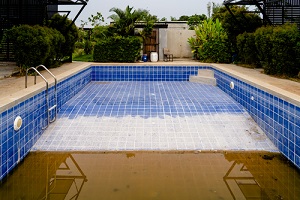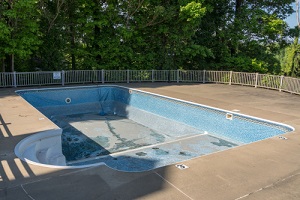When you are buying a home as an investment, you might be wondering if it is worth keeping its existing swimming pool. Although many people find a swimming pool to be a highly attractive amenity, others will not even consider purchasing a home that has one. Here is a look at some of the factors to consider when deciding if you should remove the pool on an investment property.
Location
 If you happen to live in a warmer climate like Texas or Florida, having a pool may increase your property value and make it more likely for your home to sell. This is particularly useful in coastal and resort communities where people rent vacation homes.
If you happen to live in a warmer climate like Texas or Florida, having a pool may increase your property value and make it more likely for your home to sell. This is particularly useful in coastal and resort communities where people rent vacation homes.
In addition, a swimming pool may be expected in a higher-end neighborhood; if most of the neighbors have pools but your property does not, that could actually decrease the home’s market value. However, if the home you are buying is the only one in the neighborhood that has a swimming pool, experts advise removing it.
In the Washington, D.C., area, for example, home flippers report that there are some buyers who simply do not want pools and that having one will automatically eliminate a certain percentage of potential buyers. Moreover, when it comes to those who do not mind having a pool on the property, they are not willing to pay for it. Even those who are specifically seeking a swimming pool do not want to pay much more for it, the Washington Post reports.
Liability
Liability is one of the biggest reasons many homeowners shy away from having a pool, so this should be kept in mind when you are deciding how to approach the pool on your investment property. The property’s owner is responsible for any type of injury or incident that occurs during swimming pool use, and the hazards are significant.
Drowning may be the most obvious and serious one, but there is also the possibility of falls, injuries while diving or even exposure to toxic materials. In addition, homeowners are liable for injuries sustained by guests or unauthorized users.
In many cases, it may also be necessary to purchase additional insurance to ensure all the bases are covered, and certain safety requirements will likely need to be met to keep that coverage. For example, protective measures may need to be installed, such as gates, locks, safety covers and fences, which can add to your expenses significantly.
Maintenance
 Another big reason that many home buyers avoid homes with pools is the prospect of maintenance.
Another big reason that many home buyers avoid homes with pools is the prospect of maintenance.
Keeping swimming pools in good condition requires maintaining their mechanical systems as well as the electronic systems controlling the pump and lighting. Debris must be cleaned regularly, the water must be chlorinated, the chemicals need constant adjustments, and filters must be cleaned.
If the home is situated in an area where the pool cannot be enjoyed year-round, the homeowner will also be responsible for the costs and effort involved in closing the pool at the end of summer and reopening it each year when better weather approaches.
According to HomeAdvisor, the average cost of basic pool maintenance can run as much as $1,800 per year, and that does not include any needed repairs and utility costs, such as the water to fill the pool and fuel if the pool uses a heater.
Value
A study by HouseLogic shows that a swimming pool can raise a home’s value by 7 percent at most, but that is only under the ideal conditions. In some areas, however, it can work against you. If the pool on the investment property is poorly maintained or needs repair, it can be a big deterrent to buyers and reduce the home’s value.
Yard space
Another situation where it is not beneficial to have a swimming pool is when the pool occupies a large percentage of the yard’s overall space. Homebuyers look for usable space in their yard, whether they wish to plant a garden, play sports, entertain or place a swing set and other recreational items for children. Buyers with small children and pets, in particular, look for a large amount of usable yard space, so pools that leave a property with little remaining yard space should be removed.
Removing A Pool Properly
If you decide to remove a swimming pool from your investment property, it is important that the job is carried out correctly by pool removal professionals or you could end up with a very expensive problem on your hands.
There are two approaches when it comes to removing a pool: a full pool removal or a partial pool removal, also known as a fill-in. Because a fill-in must be disclosed to future buyers, it is best to get a full pool removal on investment properties.
 This may be a slightly more expensive option, but it leaves the yard in perfect condition so that it can be used for whatever purpose you or future buyers have in mind. Removing the pool from the yard and making an area of grass or a large deck can attract a significant number of buyers.
This may be a slightly more expensive option, but it leaves the yard in perfect condition so that it can be used for whatever purpose you or future buyers have in mind. Removing the pool from the yard and making an area of grass or a large deck can attract a significant number of buyers.
It is also essential that you hire an experienced pool removal team who has the proper tools and experience to carry out the pool removal. When this process is not done correctly, the yard can sink and create significant problems that are very costly to repair.
Reach Out to the Northern Virginia Swimming Pool Removal Professionals
If you have purchased an investment property with a swimming pool and you would like to raise its resale prospects by having the pool removed, get in touch with the Northern Virginia swimming pool removal professionals at Dirt Connections.
Our experts can demolish and haul away the debris of the pool, backfill the area with dirt, and leave the yard graded to perfection so you can attract the maximum number of buyers and raise the chances of getting a good return on your investment.
Summary

Dirt Connections was started with one goal in mind: providing quality residential and commercial construction services to clients on time and on budget. Reach out for more information on how we can support your next project.
For your convenience our estimates are free and by appointment. Call 703-940-9949 for a free estimate today!










































